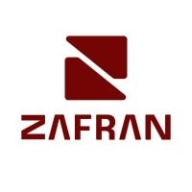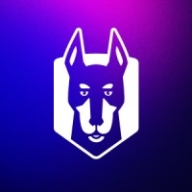


Snyk and Microsoft Defender Vulnerability Management compete in the cybersecurity sector, focusing on vulnerability management. Microsoft Defender appears to have the upper hand due to its comprehensive integration capabilities with the Microsoft ecosystem and enterprise-focused features.
Features: Snyk is known for its simplicity, easy integration, and developer-friendly approach. It integrates well with cloud CI systems and offers accurate vulnerability detection, which developers can use efficiently. Microsoft Defender integrates deeply within the Microsoft ecosystem, providing robust threat intelligence and security advisories, particularly beneficial for enterprise operations.
Room for Improvement: Snyk could benefit from including SAST or DAST features, improving language support, and refining its notification and licensing-compliance systems. It also needs to focus on scanning accuracy and false-positive reduction. Microsoft Defender could enhance report customization and user query features for SMEs and increase portal refresh rates while offering more affordable pricing options.
Ease of Deployment and Customer Service: Snyk supports diverse deployment environments like private, public clouds, and on-premises, with users highlighting responsive technical support and direct developer access. Microsoft Defender also offers versatile deployment, praised for strong integration within Microsoft environments and technical support that provides prompt, effective solutions.
Pricing and ROI: Snyk's pricing is seen as expensive but justified by its capabilities and integration ease, providing significant time savings in vulnerability management. Microsoft Defender is more economical, especially with Microsoft's licensing bundles, aligning well with its extensive features and industry standards.
| Product | Market Share (%) |
|---|---|
| Microsoft Defender Vulnerability Management | 2.7% |
| Snyk | 3.1% |
| Zafran Security | 1.0% |
| Other | 93.2% |



| Company Size | Count |
|---|---|
| Small Business | 8 |
| Midsize Enterprise | 2 |
| Large Enterprise | 5 |
| Company Size | Count |
|---|---|
| Small Business | 20 |
| Midsize Enterprise | 9 |
| Large Enterprise | 21 |
Zafran Security integrates with existing security tools to identify and mitigate vulnerabilities effectively, proving that most critical vulnerabilities are not exploitable, optimizing threat management.
Zafran Security introduces an innovative operating model for managing security threats and vulnerabilities. By leveraging the threat exposure management platform, it pinpoints and prioritizes exploitable vulnerabilities, reducing risk through immediate remediation. This platform enhances your hybrid cloud security by normalizing vulnerability signals and integrating specific IT context data, such as CVE runtime presence and internet asset reachability, into its analysis. No longer reliant on patch windows, Zafran Security allows you to manage risks actively.
What are the key features of Zafran Security?
What benefits can users expect from Zafran Security?
In industries where security is paramount, such as finance and healthcare, Zafran Security provides invaluable protection by ensuring that only exploitable vulnerabilities are addressed. It allows entities to maintain robust security measures while allocating resources efficiently, fitting seamlessly into existing security strategies.
Microsoft Defender Vulnerability Management enables organizations to identify vulnerabilities, manage patches, and fortify threat detection. It offers endpoint assessments, cloud incident management, and dynamic security through Microsoft's Security Scorecard integration.
Organizations leverage Microsoft Defender Vulnerability Management for advanced threat detection and response. It provides robust tools for vulnerability assessment and cloud incident management, integrated with Microsoft's Security Scorecard to enhance dynamic security profiling. Key features include automatic patch deployment, security configuration management, and seamless integration with Microsoft platforms, benefiting both on-prem and cloud environments. Organizations can track vulnerabilities with severity-based reports, helping manage outdated software and minimizing threat exposure.
What are the key features of Microsoft Defender Vulnerability Management?In healthcare, Microsoft Defender Vulnerability Management helps manage compliance with health regulations, while in finance, it aids in securing sensitive data from cyber threats. Manufacturing sectors benefit from its patch management, keeping operational technology systems less vulnerable to disruptions.
Snyk excels in integrating security within the development lifecycle, providing teams with an AI Trust Platform that combines speed with security efficiency, ensuring robust AI application development.
Snyk empowers developers with AI-ready engines offering broad coverage, accuracy, and speed essential for modern development. With AI-powered visibility and security, Snyk allows proactive threat prevention and swift threat remediation. The platform supports shifts toward LLM engineering and AI code analysis, enhancing security and development productivity. Snyk collaborates with GenAI coding assistants for improved productivity and AI application threat management. Platform extensibility supports evolving standards with API access and native integrations, ensuring comprehensive and seamless security embedding in development tools.
What are Snyk's standout features?Industries leverage Snyk for security in CI/CD pipelines by automating checks for dependency vulnerabilities and managing open-source licenses. Its Docker and Kubernetes scanning capabilities enhance container security, supporting a proactive security approach. Integrations with platforms like GitHub and Azure DevOps optimize implementation across diverse software environments.
We monitor all Vulnerability Management reviews to prevent fraudulent reviews and keep review quality high. We do not post reviews by company employees or direct competitors. We validate each review for authenticity via cross-reference with LinkedIn, and personal follow-up with the reviewer when necessary.